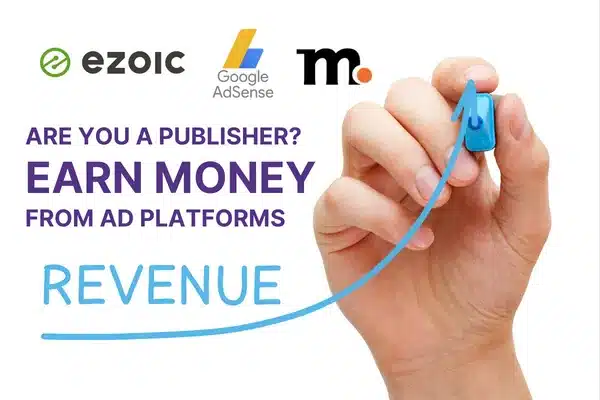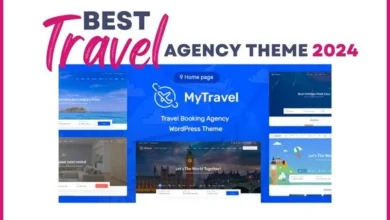How to Use Ad Platforms as a Publisher

Are you a publisher looking to monetize your website or blog? One of the most effective ways to do so is by using ad platforms. But with so many options available, it can be overwhelming to decide which ones to use. In this article, we will discuss how to use ad platforms to earn as a publisher and which are the best ones to use.
What are Ad Platforms?
Ad platforms are digital advertising networks that connect publishers with advertisers. Publishers can display ads on their website or blog and earn revenue each time a visitor clicks on or views an ad. Advertisers, on the other hand, can reach their target audience and increase brand awareness through the ads.
How to Use Ad Platforms as a Publisher
Choose the Right Ad Platform: When selecting an ad platform, consider your niche, traffic, and revenue goals. Some ad platforms work better for specific niches or traffic types, while others are more suited for higher traffic websites. Research and compare different ad platforms to find the ones that best match your needs.
Place Ads Strategically: Once you have selected an ad platform, place ads strategically on your website or blog. Ad placement is crucial for maximizing revenue while maintaining a good user experience. Ads should be placed where they are visible, but not intrusive, and should be relevant to your content.
Optimize Ad Formats: Ad formats can significantly impact revenue. Experiment with different formats such as display ads, native ads, and video ads, to see which ones perform best on your website. Test different sizes, colors, and placements to find the optimal format for your audience.
Monitor Performance: Monitor ad performance regularly to identify which ads are generating the most revenue and which are not. Use the data to adjust ad placement, formats, and targeting to optimize revenue.
Best Ad Platforms for Publishers
Ezoic: Ezoic is a digital platform that provides website optimization tools and ad revenue management solutions for publishers. It uses machine learning and artificial intelligence to help website owners improve user experience, increase website speed, and boost ad revenue.
Google AdSense: Google AdSense is the most popular ad platform for publishers. It is easy to set up and offers a wide range of ad formats. Google AdSense uses contextual targeting, which displays ads that are relevant to your content.
Media.net: Media.net is a contextual ad platform that partners with Yahoo and Bing. It offers display and native ads and is a great alternative to Google AdSense.
Amazon Associates: Amazon Associates is an affiliate marketing program that allows publishers to earn a commission by promoting Amazon products on their website. It is a great option for publishers in the e-commerce niche.
PropellerAds: PropellerAds is a global ad network that offers a wide range of ad formats, including push notifications and interstitial ads. It is a great option for publishers with high traffic.
Why Ezoic Ad Platforms?
Ezoic is one of the best Platform where you can get double or more than google adsense. Let’s know more details about Ezoic.
Ezoic offers a variety of tools to help publishers optimize their website, including:
Ad Tester: Ezoic’s Ad Tester allows publishers to test different ad combinations to find the ones that generate the most revenue. The Ad Tester uses machine learning to identify the optimal ad layout, ad size, and placement for each visitor.
Site Speed Accelerator: Ezoic’s Site Speed Accelerator uses advanced caching and content delivery network (CDN) technologies to improve website speed and performance. This tool is crucial for publishers who want to provide a better user experience and improve search engine rankings.

Big Data Analytics: Ezoic’s Big Data Analytics tool provides publishers with real-time insights into their website’s performance. This tool tracks user behavior, ad performance, and revenue data, allowing publishers to make data-driven decisions to optimize their website.
Automated Website Personalization: Ezoic’s Automated Website Personalization tool uses machine learning to personalize website content and ads for each visitor. This tool can improve engagement and increase ad revenue by showing visitors the most relevant content and ads.
In addition to these tools, Ezoic offers a variety of ad revenue management solutions, including ad mediation, header bidding, and ad network optimization. These solutions allow publishers to maximize ad revenue by working with multiple ad networks and optimizing ad performance.
Ezoic has become popular among publishers because it provides a comprehensive platform for website optimization and ad revenue management. It is also easy to use, and its tools and solutions are customizable, allowing publishers to tailor their website optimization and ad revenue management strategies to their specific needs.
Overall, Ezoic is a powerful platform for publishers who want to improve their website’s user experience, speed, and ad revenue. Its machine learning and AI-based tools, along with its ad revenue management solutions, make it a valuable asset for any publisher looking to grow their business.
How you can easily get approval from these Ad Platforms?
Getting approval from ad platforms can vary depending on the platform, but there are some general steps you can take to increase your chances of approval:
Review the Ad Platform’s Policies: Before applying to any ad platform, carefully review their policies and guidelines to ensure that your website meets their requirements. Each ad platform has its own set of policies, so it’s important to review them thoroughly to avoid any potential violations.
Ensure High-Quality Content: Ad platforms typically look for high-quality content that provides value to users. Make sure your website has original, informative, and engaging content that is relevant to your target audience. Also, ensure that your website is free from errors, such as broken links, spelling errors, and other technical issues.
Improve Website Performance: Ad platforms often consider website performance when reviewing applications. Ensure that your website loads quickly, has a user-friendly design, and is optimized for mobile devices.
Use Advertiser-Friendly Language: Avoid using controversial or offensive language on your website, as this can hurt your chances of approval. Ad platforms want to work with websites that provide a safe and positive user experience for their advertisers.
Apply to Multiple Ad Platforms: It’s a good idea to apply to multiple ad platforms to increase your chances of approval. This way, if one platform rejects your application, you can still monetize your website through another platform.
Be Patient: The approval process for ad platforms can take time, so be patient and wait for the platform to review your application. If you have not heard back within a reasonable amount of time, you can follow up with the platform to inquire about the status of your application.
Overall, getting approval from ad platforms requires a combination of high-quality content, good website performance, and adherence to platform policies. By following these steps, you can increase your chances of approval and start monetizing your website through ad platforms.
Conclusion
Using ad platforms is a great way for publishers to earn revenue from their website or blog. To be successful, publishers should choose the right ad platform, place ads strategically, optimize ad formats, and monitor performance regularly. The best ad platforms for publishers include Google AdSense, Media.net, Amazon Associates, and PropellerAds. By using these tips and platforms, publishers can increase their revenue and grow their business.




